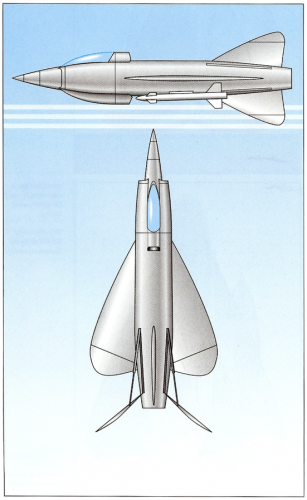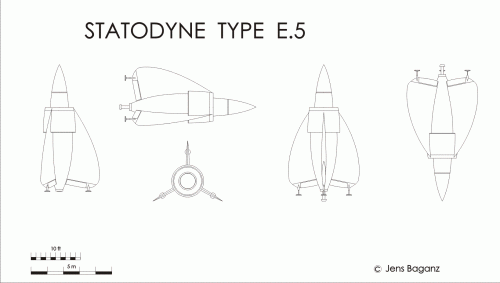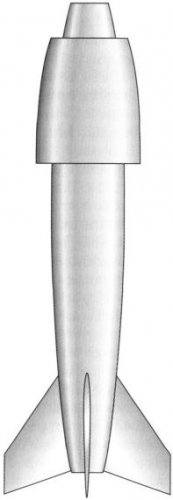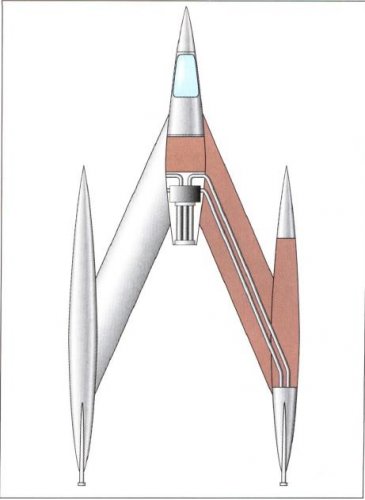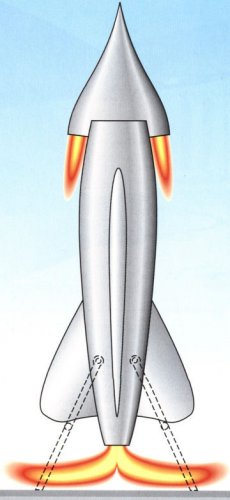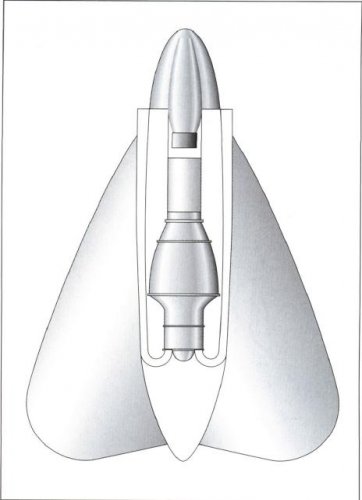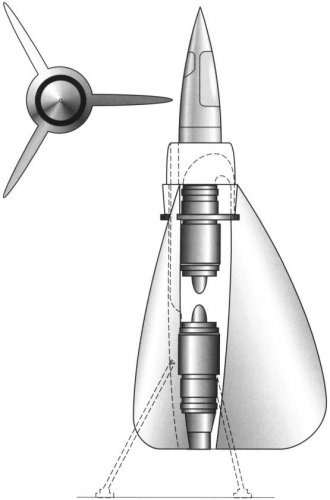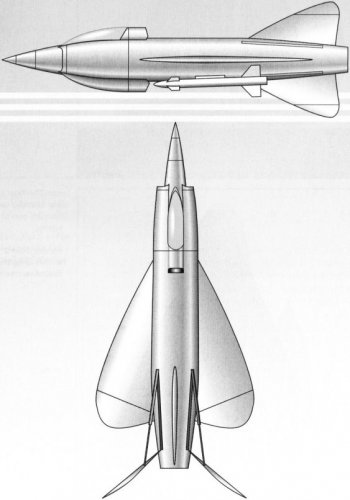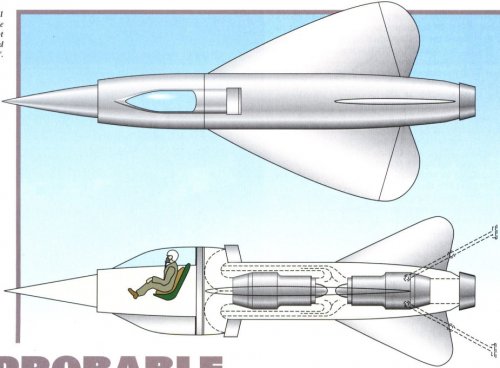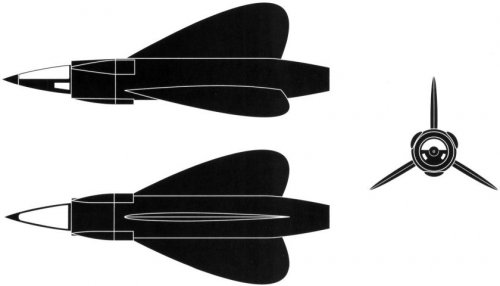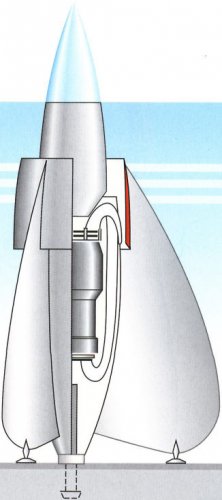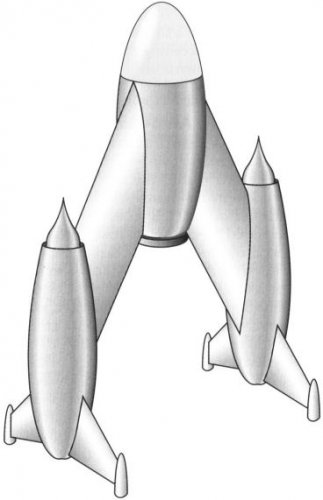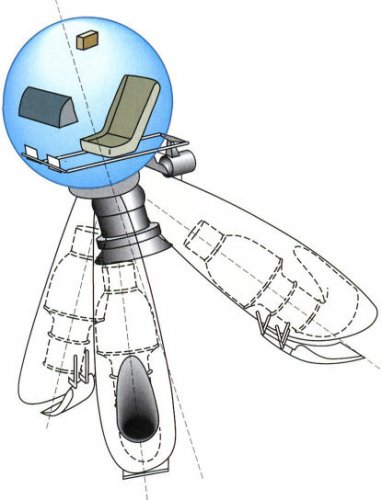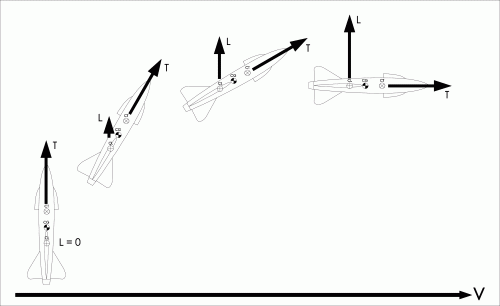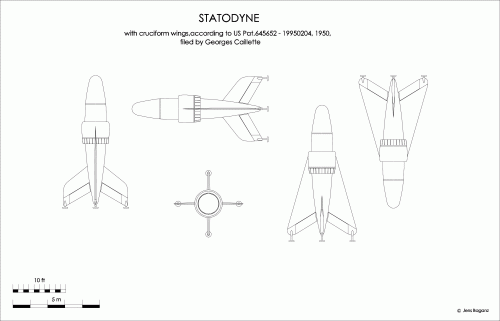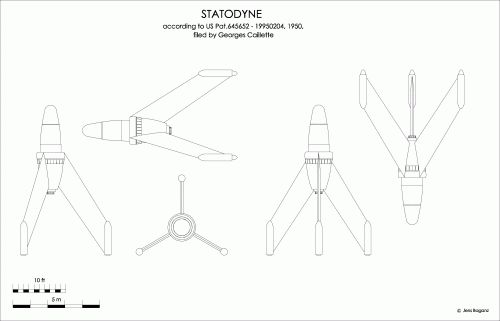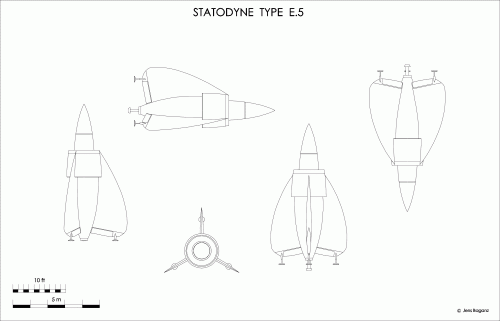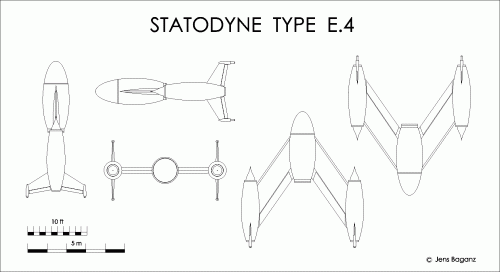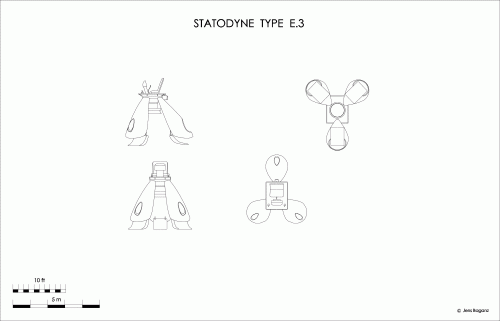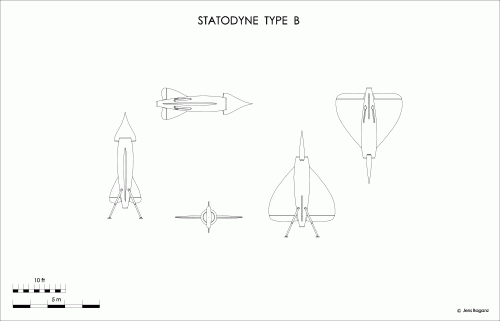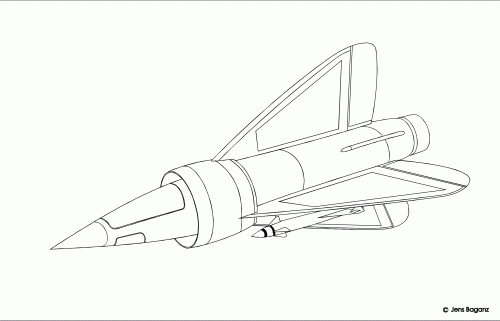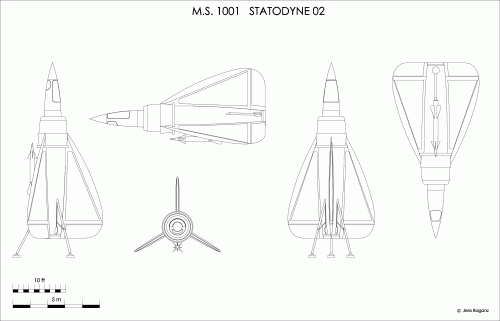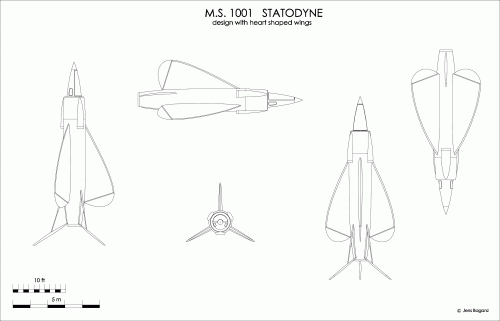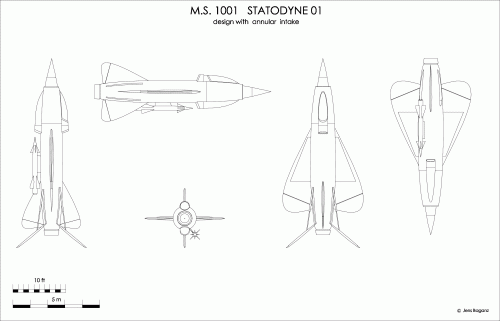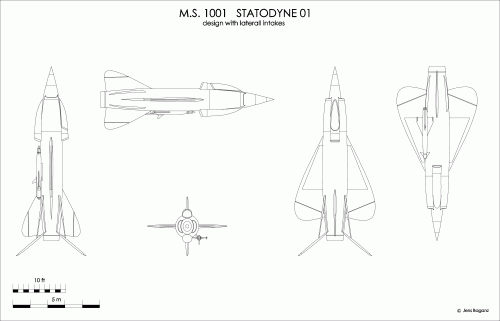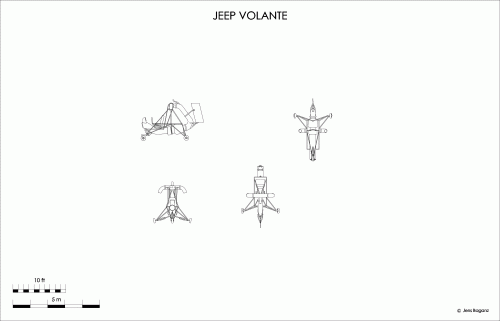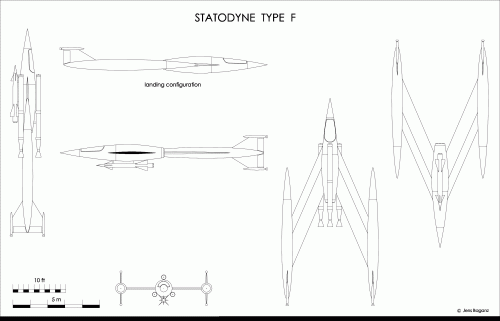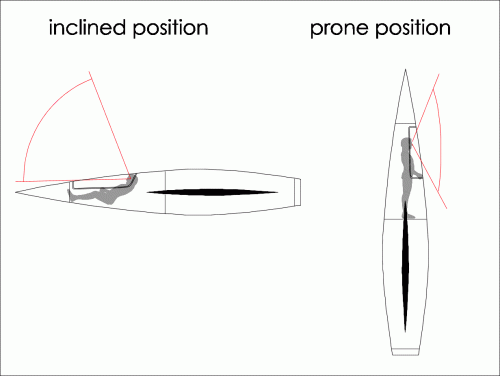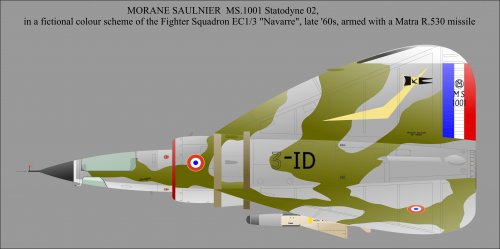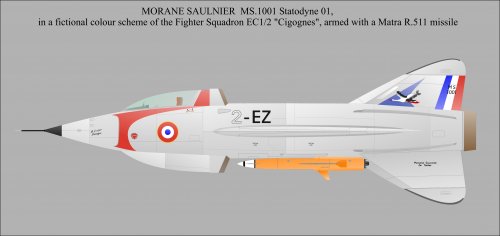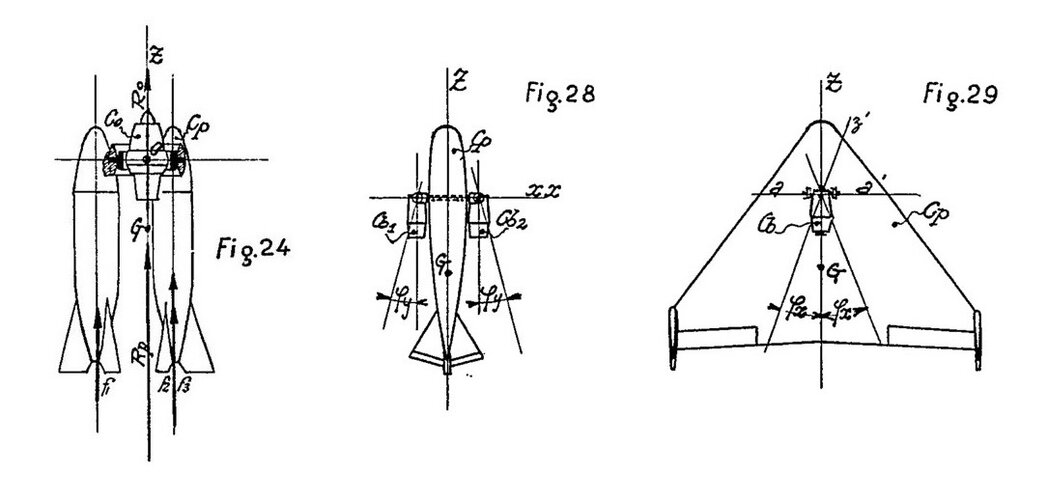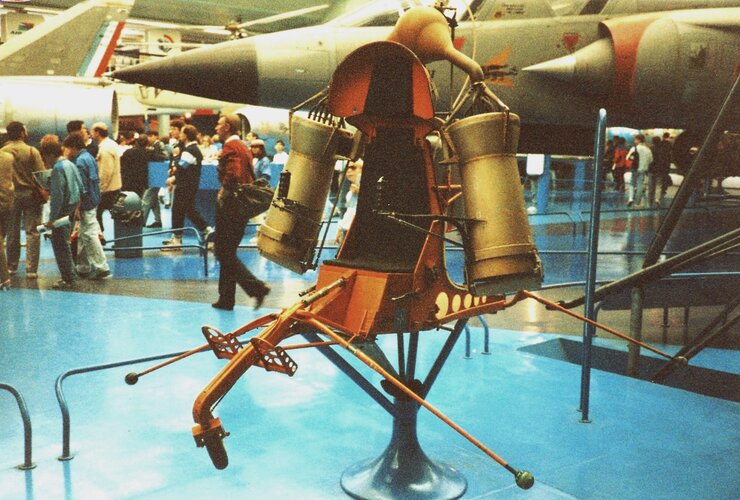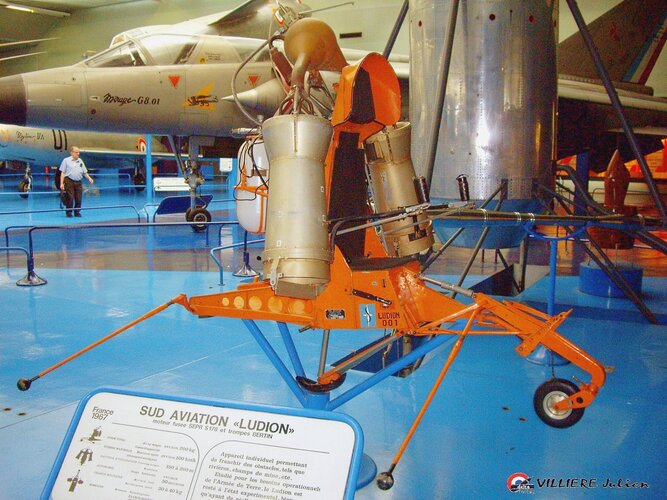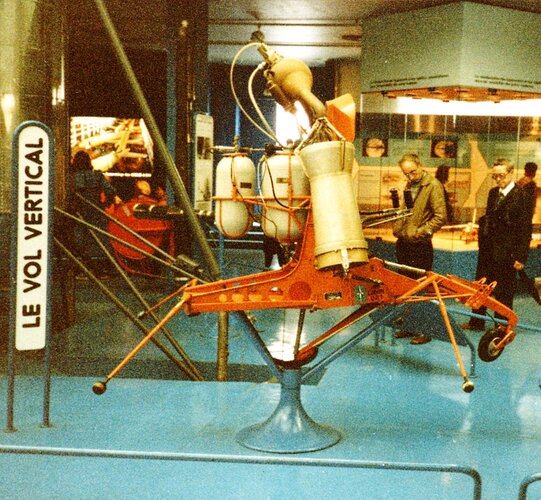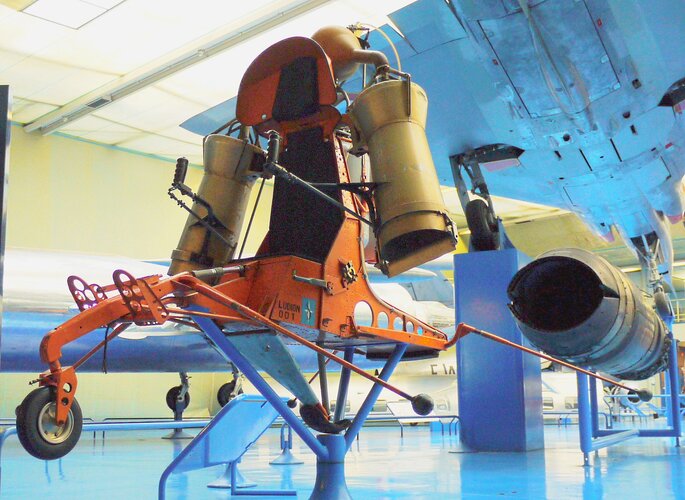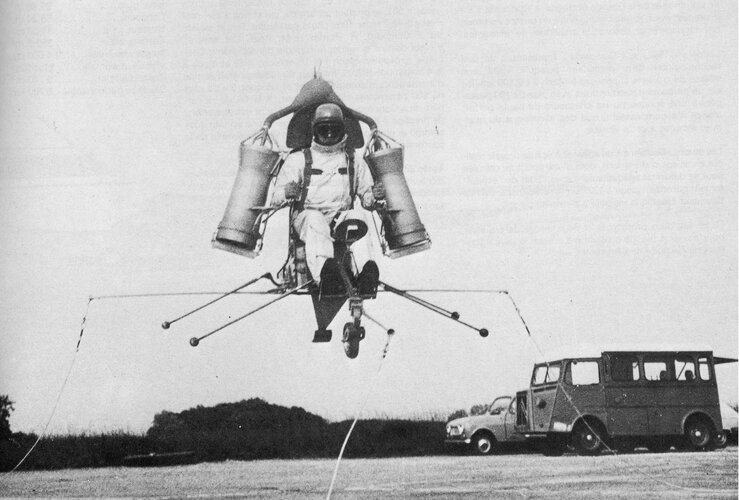Random thought....
Have there been any designs for jet VTOL tailsitters, on paper or actually built, with the engine reversed in the airframe and the efflux turned 180 degrees or so to exit from the nose? It's not hard to imagine such a design with a pair of Harrier-style rotating louvers for pitch and role control and perhaps a couple of small vanes to divert the efflux for yaw control, or perhaps four rotating louvers to do all four. You would think that there would be advantages in terms of reduced ground interaction effects and increased "pendulum" stability from hanging the aircraft by the nose, so to speak. Examples? Thoughts?
Cheers,
Matthew
Have there been any designs for jet VTOL tailsitters, on paper or actually built, with the engine reversed in the airframe and the efflux turned 180 degrees or so to exit from the nose? It's not hard to imagine such a design with a pair of Harrier-style rotating louvers for pitch and role control and perhaps a couple of small vanes to divert the efflux for yaw control, or perhaps four rotating louvers to do all four. You would think that there would be advantages in terms of reduced ground interaction effects and increased "pendulum" stability from hanging the aircraft by the nose, so to speak. Examples? Thoughts?
Cheers,
Matthew

